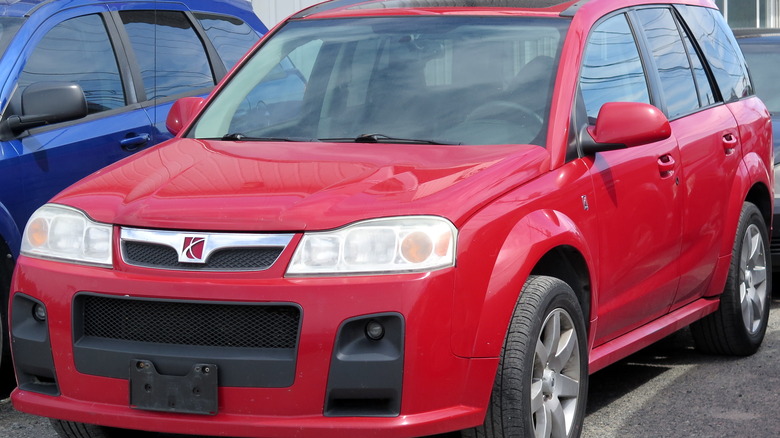
Elise240SX/Wikimedia
For those in the United States, there is always a debate when someone is looking to get a new car: deciding between a vehicle made domestically or abroad. Each side of the debate has its preconceived notions, such as American cars being able to deliver power and muscle, with internationally made cars leaning towards reliability. As technology evolves, the dividing line between domestic and international vehicles has certainly lessened, but when it comes down to it, the buyer must choose what they want to invest thousands of dollars in depending on their needs and preferences.
However, the two sides are not always mutually exclusive. Over the years, many American automakers have made deals with international brands. Usually, this sort of collaboration results in an opening in the marketplace for a company that doesn’t have a natural foothold in an international territory. For example, Ford and Mazda had a partnership for many decades that helped establish the Japanese company in the United States. Sometimes, that partnership runs even deeper, and companies start exchanging parts, such as engines. You may expect this between Chevrolet and Dodge, both being General Motors brands, but there have been plenty of instances of internationally made engines inside an American vehicle. We are going to spotlight seven different occasions over the years where, for one reason or another, two competitors decided it was a good idea to utilize the same engines.
[Featured image by Elise240SX via Wikimedia Commons | Cropped and scaled | CC BY-SA 4.0]
Chevrolet Nova
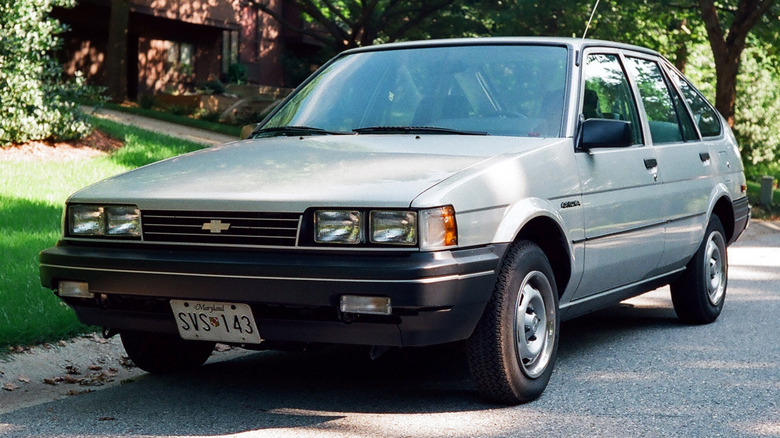
Joe Haupt/Wikimedia
Our first stop alphabetically is Chevrolet. The Nova — originally dubbed the Chevy II — debuted for the 1962 model year and had a solid first run through 1979. Over that time, the Nova evolved with three different generations, but amongst them, Chevrolet was always using domestic engines underneath the hood. The Chevrolet Nova name was resurrected for the 1985 model year, but it was not just Chevy deciding to return to one of its older names. This time, the Nova was made in collaboration with Japanese automaker Toyota.
Much like Toyota’s Mazda Toyota Manufacturing U.S.A. partnership, General Motors and Toyota joined to form New United Motor Manufacturing, Inc. (NUMMI), a company that opened in 1984 to operate a manufacturing plant in Fremont, CA. The reason for the partnership was GM wanting to make smaller, more efficient vehicles in the aftermath of the oil crisis and newly implemented emissions restrictions. The American company thought Toyota would be a good partner for this initiative.
Though it would later make the Toyota Corolla and Tacoma, the first vehicle that NUMMI created was the new Chevrolet Nova, which was essentially a rebadged Toyota Sprinter and shared the same platform as the Corolla. Not only that, but it utilized a 1.6L I4 engine that was part of Toyota’s A Series of engines, particularly the 4A-GE I4. Though it could only generate 74 hp, it had a combined mileage of 29 mpg. The Nova ended production in 1988, where it would be succeeded by the Prizm.
[Featured image by Joe Haupt via Wikimedia Commons | Cropped and scaled | CC BY-SA 2.0]
Ford Probe
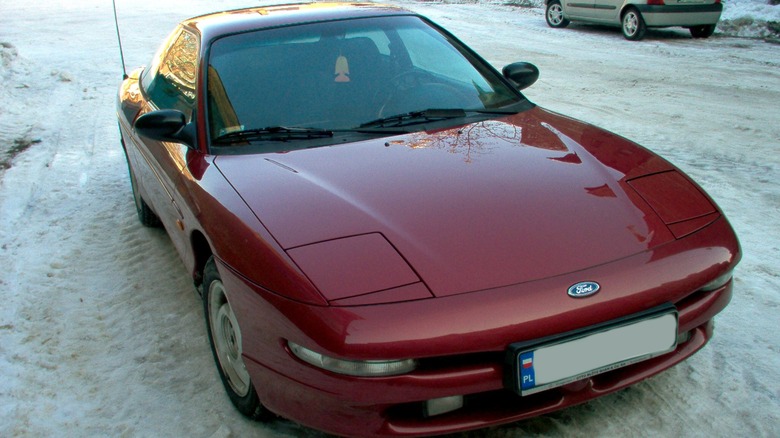
Yarl/Wikimedia
Toyota was not the only Japanese car company making deals with American automakers in the mid-to-late 1980s. During this same period, Ford and Mazda worked together on the Ford Probe coupe, which hit the market in the 1989 model year. Like with the Chevrolet Nova, Ford was trying to find ways to make small vehicles that focused on efficiency. The Probe was created on the back of the platform that Mazda had been using for a few years and served as the base of vehicles like the Mazda 626. However, this was not the exact same platform, called the GD, but instead, the Probe’s platform was simply an evolution of what Mazda had previously designed.
What was taken directly from Mazda, however, was the engine for the Probe. The standard engine you would get with the coupe would be a 2.2L Mazda F2 I4 engine, which also came in a turbocharged variant. If you wanted an American engine with the Probe, you would need to upgrade to a 3.0L Vulcan V6. With the Mazda I4 engine, you were looking at about 111 hp with the standard version, and that would be boosted to 147 hp with the turbocharged model.
The Probe received an update for 1993, and all the engines were replaced by a 2.0L Mazda FS I4 and a 2.5L Mazda KL-DE V6 that would get you 117 hp and 165 hp, respectively. They would power the Ford Probe until its end in 1997.
[Featured image by Yarl via Wikimedia Commons | Cropped and scaled | CC BY-SA 3.0]
Ford Ranger
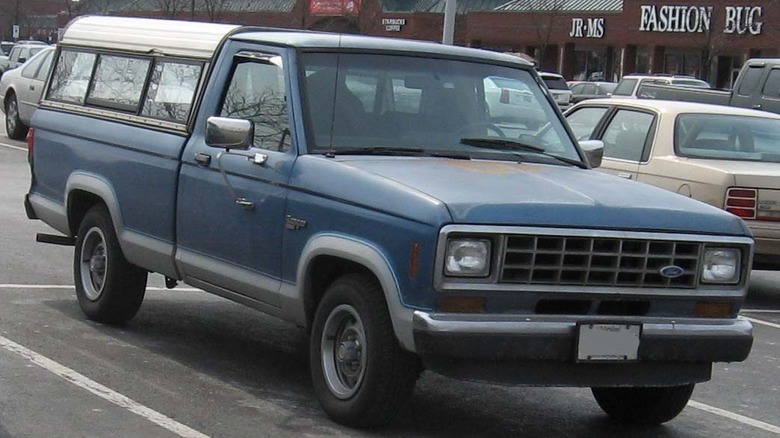
IFCAR/Wikimedia
The previous two vehicles were full-on partnerships between American and Japanese companies, to the point that the Japanese engines were the standard issue offerings for the cars. Not every single use of an internationally produced engine serves that wide of a purpose, though. Sometimes, an American company goes to another company for a very specific reason, and that is the case with the Ford Ranger, the pickup truck that the company introduced for the 1983 model year. Ford looked outside of its own development team to provide the truck’s diesel engine.
For the first two model years, Mazda supplied the Ranger’s engine. Mazda has many different series of diesel engines, and the one for the Ranger was a 2.2L S2 I4. As it happens, the engine was actually Mazda rebranding another company’s motor as one of its own. This diesel engine actually originated with the British company Perkins as the Perkins 4.135. The two engines used parts interchangeably, allowing Mazda to build its own version. The S2 generated 59 hp and 90 lb-ft of torque.
After two years, Ford switched over to a different Japanese automaker for the Ranger’s diesel engine: Mitsubishi. The new diesel power came from the turbocharged Mitsubishi 4D55 I4. This was certainly an upgrade in terms of power, as it was able to generate 86 hp and 134 lb-ft of torque. Like its predecessor, it only lasted two years before Ford abandoned a diesel option altogether for the Ranger.
[Featured image by IFCAR via Wikimedia Commons | Cropped and scaled | Public Domain]
Jeep Grand Cherokee
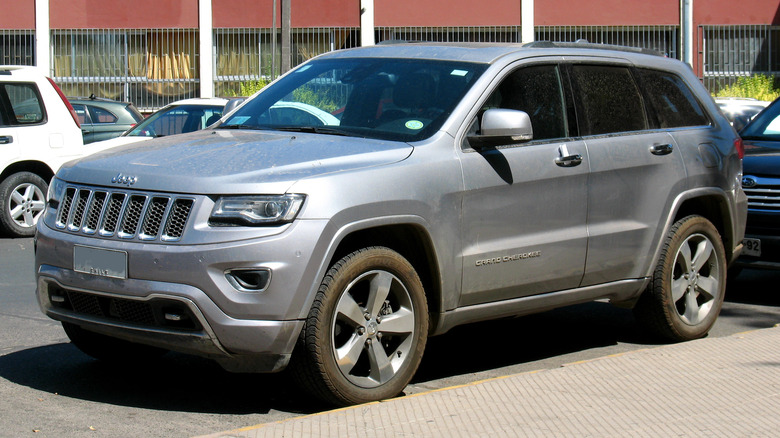
order_242/Wikimedia
Ford was not the only United States-based car company that looked overseas to find a diesel engine. After all, diesel is a far more prevalent form of fuel outside America, so looking to foreign companies familiar with those engines made sense. This is exactly what Jeep did for its Grand Cherokee. This mid-size SUV debuted for the 1993 model year, but it wouldn’t receive a diesel engine until 1995. That first engine would be a 2.5L I4 that could generate 87 hp and 139 lb-ft of torque.
This turbo diesel engine would be produced by the Italian company VM Motori, which exclusively makes diesel engines. The company had been around since the late 1940s, but in 1995, VM Motori was acquired by the Detroit Diesel Corporation, which itself would be bought by DaimlerChrysler five years later. This is the same company that owns Jeep, so this whole partnership and exchanging of goods comes with the territory.
Over the years, the Jeep Grand Cherokee would utilize several different diesel engines made by VM Motori, but an important note about this is that they would not be used in the United States. The diesel options were only available in international markets, and considering diesel is a more popular fuel in these territories, it’s understandable why Jeep wouldn’t feel the need to bring the diesel-powered Grand Cherokee to the U.S. Diesel would remain an option for the SUV through 2020, at which point it was removed as an option.
[Featured image by order_242 via Wikimedia Commons | Cropped and scaled | CC BY-SA 2.0]
Lincoln Continental Mark VII
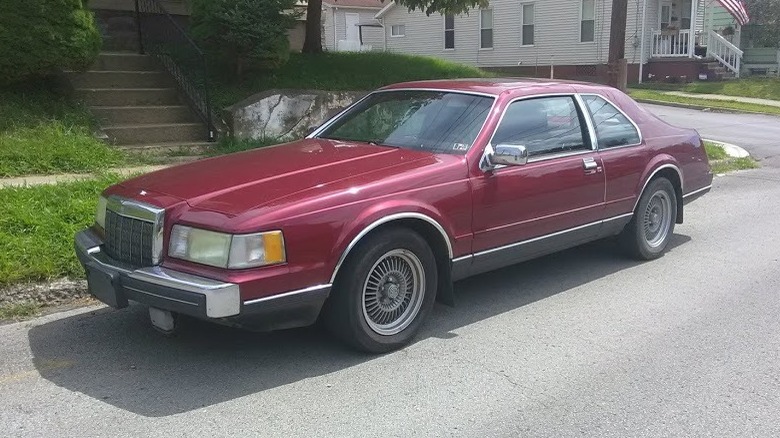
MercurySable99/Wikimedia
Ford had deals with Mazda and Mitsubishi for diesel engines in the Ranger, but the company’s luxury brand, Lincoln, went elsewhere when it came to getting a diesel engine for the Continental Mark VII, the luxury coupe that arrived for the 1984 model year. That place was Germany, in a deal with BMW.
Normally, the Mark VII would be powered by a 5.0L V8 engine, but for those who wanted diesel, you had the option of the 2.4L I6 turbodiesel BMW M21. This was an engine that was able to get you 115 hp, and along with that, you had the fairly decent combined mileage of 24 mpg. The diesel era of the Lincoln Continental Mark VII was incredibly short-lived, however, as this engine was only available for the 1984 and 1985 model years. When 1986 rolled around, Lincoln opted to upgrade the standard V8, which could now generate 200 hp, and the Mark VII took off.
Production of the car lasted through 1992, but diesel never returned as an option. Due to its short life, finding a diesel-powered version of the luxury coupe is extremely difficult, making it somewhat of a collector’s item.
[Featured image by MercurySable99 via Wikimedia Commons | Cropped and scaled | CC BY-SA 4.0]
Pontiac Vibe
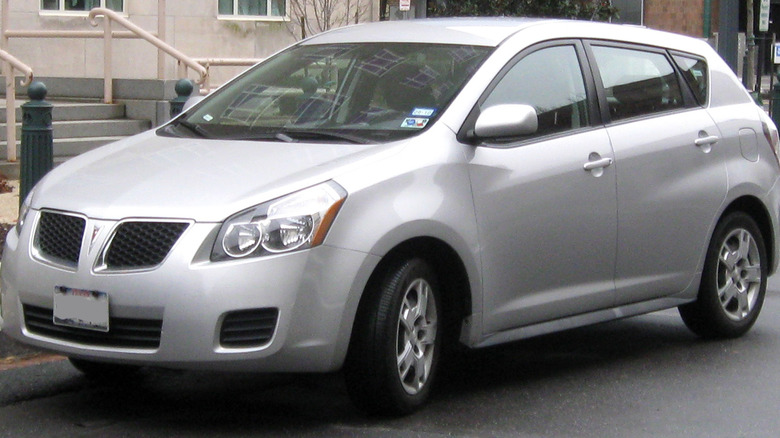
IFCAR/Wikimedia
The New United Motor Manufacturing, Inc. partnership between General Motors and Toyota was not exclusive to the 1980s. The two companies continued to run the NUMMI plant in Fremont, CA until 2010, when it was taken over by Tesla. Over that near 30 year joint venture, it only makes sense that a Toyota engine would find its way into other GM produced vehicles. For the 2003 model year, that vehicle was the Pontiac Vibe.
The Vibe shares a lineage with the Nova, another Ford vehicle with a foreign engine, with the Pontiac being the last S-body collaboration between GM and Toyota that most famously produced the Toyota Corolla but also the Chevrolet Prizm, which is what the Vibe was essentially replacing. Initially, Pontiac opted to use 1.8L I4 engines for the Vibe that were part of Toyota’s ZZ family of engines that the company had been producing since 1997. This I4 got you about 130 hp, but there was also a GT Vibe that featured a modified version of the engine in collaboration with Yamaha that upped this to 180 hp.
Pontiac changed up the engines for the Vibe for 2009, beginning a new and short-lived generation for the car. The standard engine was now a 1.8L I4 from Toyota’s ZR engine family that replaced the ZZs. The GT was now powered by a Toyota AZ 2.4L I4. These earned you 132 hp and 158 hp, respectively. The Pontiac Vibe was discontinued after the 2010 model year, which was also when NUMMI disbanded.
[Featured image by IFCAR via Wikimedia Commons | Cropped and scaled | Public Domain]
Saturn Vue
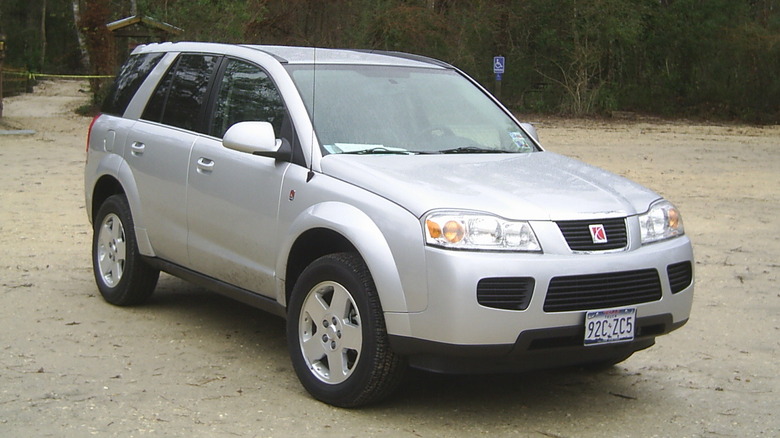
RoFra/Wikimedia
The final automobile on our list is the Saturn Vue, a compact SUV that lasted from 2002 to 2007 from the now defunct GM brand. This SUV was made in partnership with Japanese automaker Honda.
When the Vue first hit the market in 2002, every engine available — whether it was a standard I4 or an upgraded V6 — was a GM engine, but that changed for the 2004 model year. While the I4 options for the Vue remained the same, the V6 engines were replaced in favor of the Honda J35A3, a 3.5L V6 engine that could generate 250 hp and 242 lb-ft of torque. This was particularly important for the Saturn Vue Red Line trim, and it would remain part of the Vue lineup through the 2007 model year. After that, the SUV saw a new generation be introduced, but the Honda was not carried over for it.
[Featured image by RoFra via Wikimedia Commons | Cropped and scaled | CC BY-SA 2.0 DE]